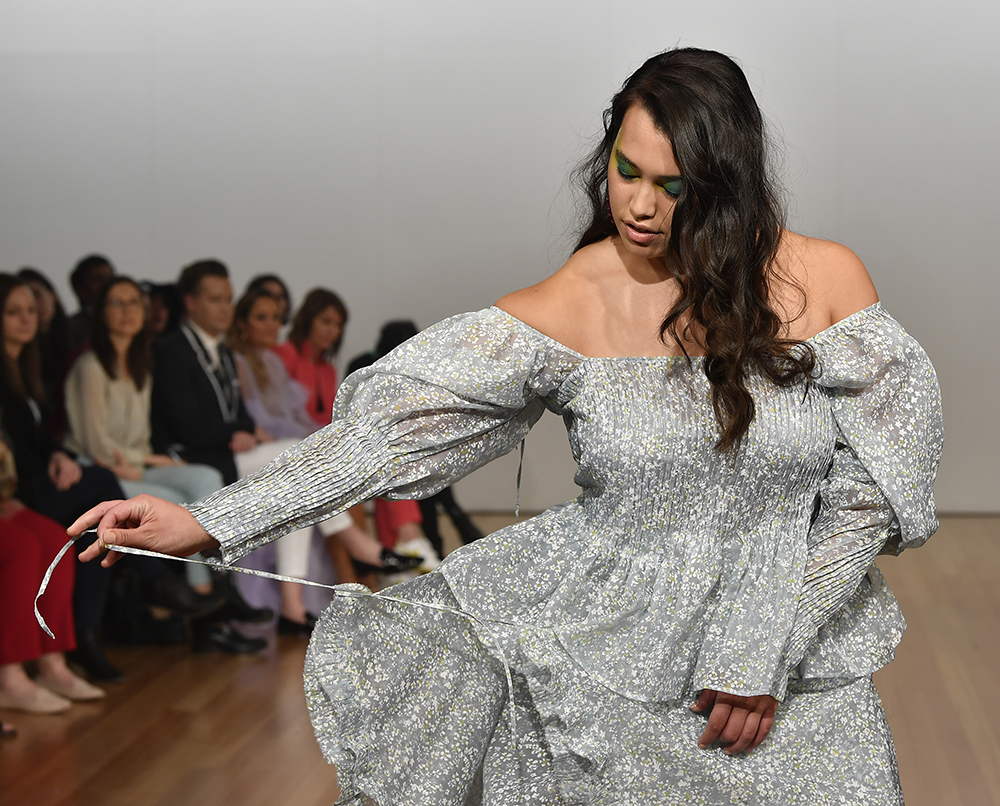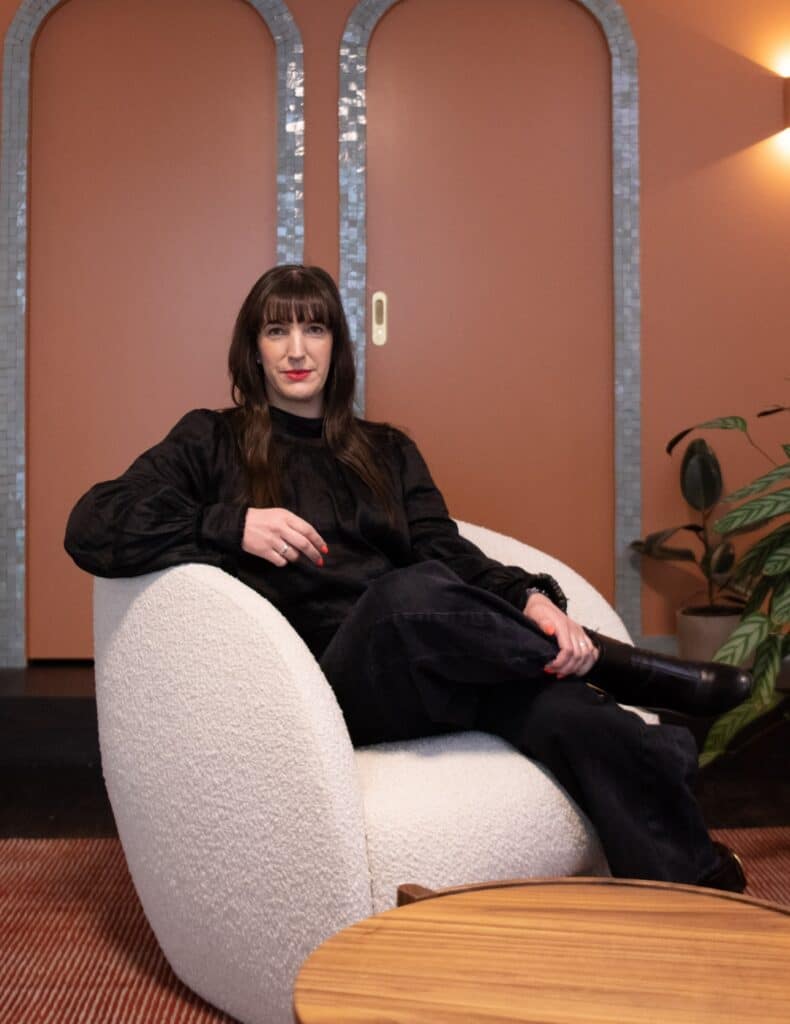Designers, local media and the institution of NZ Fashion Week itself are embracing the challenges of improving sustainability, diversity and inclusivity. Emma Gleason explores what steps are being taken, how fashion week fared – and what the industry can do next.
For the weeks preceding and following NZFW, and at the event itself, the topics of sustainability and diversity were front of mind. Part of a larger shift in the fashion industry (and society itself), the need for change is now more or less a non-negotiable, with many brands acknowledging the urgent need for evolution.
Earlier this year NZFW announced it was “relaunching with a renewed focus on diversity, inclusion and sustainability, ensuring that fashion is representative of everyone and of what’s important to New Zealand” and that as a business, they had aligned with Mindful Fashion to promote its values. According to the media kit, this year NZFW launched its first sustainability policy, and was aiming to keep 70 percent of waste from landfill.
On the ground, there was noticeably less waste than previous years, with compostable containers at the on-site cafe, and separate bins around the venue for recycling and landfill. Delegate passes, previously paper encased in thick plastic, were made from card this year. The schedule notably included two seminars; one discussing diversity and the other, sustainable business (Fashion Quarterly attended both of these).
Emblematic of the business of fashion shows, goody bags have always been a tricky issue to navigate; a necessity for designers who rely on sponsors to help cover the cost of a runway show and have to translate that support into attendee-facing marketing, goody bags are an undeniable privilege for those lucky enough to attend a show at fashion week – and certainly some guests love them.
However, questions are increasingly raised around their environmental impact – this year the goody bags certainly seemed (for the most part) more considered and restrained, and some shows eschewed them altogether, such as Kate Sylvester and Maggie Marilyn.
How local fashion brands are tackling sustainability
The buzzword du jour, sustainability in fashion can be hard to quantify and define, with different labels taking different approaches. The global question of greenwashing lingers in the air, as big international retailers jump on the ethical bandwagon, however the local shift feels genuine and earnest.
Newer brands are harnessing deadstock fabrics and creating transparent manufacturing foundations from the start, while legacy labels are tasked with evolving their longstanding supply chains and business models, while harnessing their power of scale and influence.
Abbey Reynolds, executive director of the Sustainable Business Council, believes the industry is evolving. “There has been an acceleration of focus on sustainability, with a realisation of the urgency of the issues we face,” she said at the Socially Sustainable Business panel.
When looking for parameters to define the concept of sustainability, Well Made Clothes is a good case study; an online store who only stock ethical or sustainable brands, they define the concept through the values of handcrafted, sustainable materials (organic or recycled), locally made, minimal waste, gender equal, fair trade (accredited manufacturers provide minimum wages and safe working conditions), vegan, and transparent.
These values are a good example of the framework that brands (both old and new) can use to evolve and shift their business practice to be more sustainable – socially and environmentally – and consumers can utilise them to make conscious decisions that put their purchasing power to good use.
Due to the scale of the New Zealand market and nature of our on-shore manufacturing, many local brands are inherently more sustainable due to the locality of their production and smaller carbon footprints. Others who produce offshore, usually due to scale, rely on accreditation standards and factory visits to ensure their suppliers are up to scratch.
Textiles too are a contentious issue. Many brands are integrating organic fabric in their ranges which, although far better for the environment, relies on crops like organic cotton that requires a huge amount of water. Other labels are utilising deadstock fabric to minimise waste – an approach that lends itself to the comparatively smaller units produced by local brands.
Fabric manufacturing and sourcing has a traditionally opaque supply chain due to the details of mills and suppliers being the fiercely protected intellectual property of local fabric wholesalers.
It’s an issue that was raised during the Socially Sustainable Business panel, with Kate Sylvester sharing the steps being taken by Mindful Fashion (a collective that also includes Ruby, Juliette Hogan, Ingrid Starnes, Maggie Marilyn, Zambesi and more) to utilise collective bargaining power and work with fabric wholesalers and suppliers, “instead of operating as individuals we’re collectively working together – we will have an independent body that can hold information on the traceability regarding fabrics… [designers] can access that information and hand it on to consumers to ensure fabrics are traceable and responsible.”
Emily Miller-Sharma, general manager of Ruby and designer for Liam, was also on the panel and reiterated the importance of working with local wholesalers, rather than bypassing them and going directly to textile mills.
“If we don’t support our local fabric suppliers, where will the next generations of designers get their fabric?” she asked. “We’re working with old companies and helping them shift their thinking.”
The panel also acknowledged the economic privilege required to buy sustainable and ethical garments, which sit at a higher price point, with Abbey calling on those who can to do so, rather than shaming economically disadvantaged consumers who have little choice. “Those of us who have privilege and power, it’s our job to lead this.”
The second life market is also becoming a force to consider. This year’s Kate Sylvester show incorporated archival pieces alongside the new range; not purely a sentimental move (although it certainly induced nostalgia), Kate told us the decision was part of the bigger picture for her brand.
“An important element of this year’s show is the inclusion of Kate Sylvester vintage pieces to celebrate the launch of our new online marketplace Kate Sylvester Reloved,” she said. “This inclusion of vintage pieces (and how they work in so seamlessly with the Winter 2020 looks) illustrates our commitment to timeless design and the importance of investing in good quality pieces that last for a lifetime, not a season.”
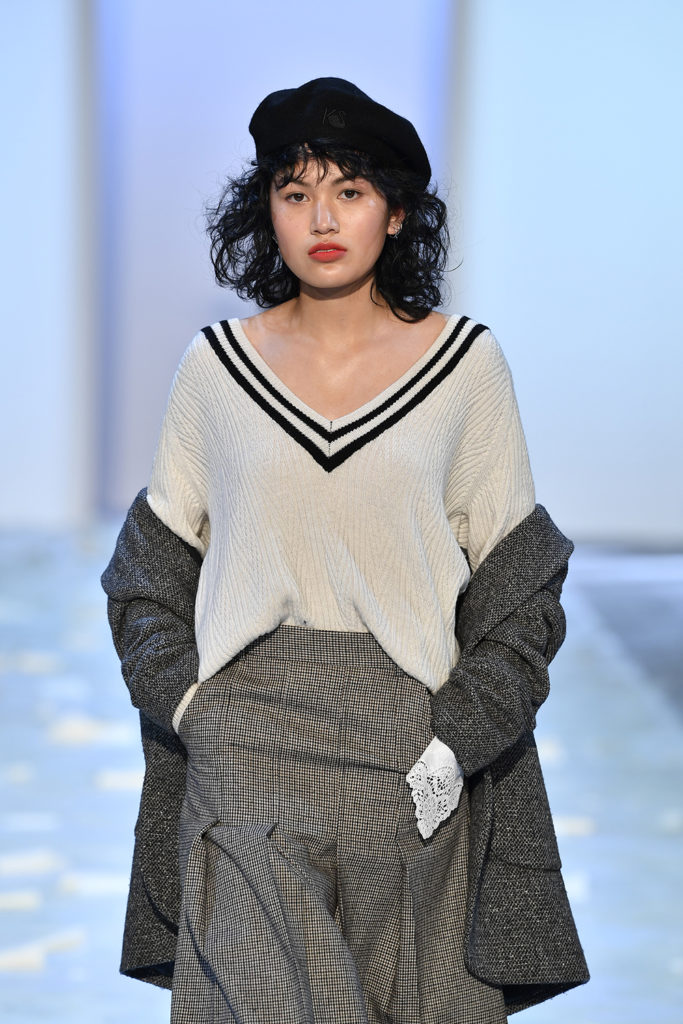
Kate spoke about the power of resale at the Socially Sustainable Business panel, as did Jessie Wong of Yu Mei, who shared her brand’s ground-breaking buy-back scheme, where they refurbish and resell bags that their customers have traded in for new designs.
The panel also discussed the power of the resale market to not only provide longevity for enduring designs, but to also offer lower-income consumers more ethical clothing at an accessible price point – a topic that generated much discussion on social media following the panel, with stylist and photographer Chloe Hill even kicking off the #fivedollartshirt challenge, aimed at exploring affordable and environmentally friendly alternatives to the super-low prices offered by fast-fashion brands.
The second life market made an appearance at the Sustainability Show, which included clothing from Waiheke-based vintage store Greatest Friend on the runway.
Putting on a runway show, the foundation of fashion week, in itself also raises valid questions of environmental impact; a show generally requires a venue, catering and refreshments, seating, lights and music, goody bags, makeup and hair teams, garment bags, tickets and transport – all of which have the potential to generate waste of some kind.
This year Maggie Marilyn, a brand committed to a sustainable approach, aimed to make their runway event as close to zero-waste as possible. In the lead up to fashion week and her debut show, designer Maggie Hewitt shared her feelings about fashion events with FQ.
“There is just so much unnecessary waste that goes into the production of fashion shows. We would urge everyone to look at all aspects of their show and how you they can re-use, re-purpose, recycle or re-home everything that is used. It’s also about challenging the things that have always been done and asking if they are really necessary, like goody bags for example.”
The brand sent out digital tickets instead of paper, and guests received fresh fruit and flowers instead of goody bags. Backstage, teams from Mecca Cosmetica and L’Oreal used products and equipment that were as natural and eco-friendly as possible. The already famous grass runway from the show found a new home thanks to Trade Me, and all surplus food was donated to the Auckland City Mission.
This year, the runways at NZFW were noticeably more diverse
The shows at NZ Fashion Week were the most diverse they’ve been in years, with a wide range of faces, bodies and abilities showcasing the latest collections from the country’s leading and emerging design talent.
Slim, white models have traditionally dominated Western fashion, including New Zealand, but it feels like the tide is turning as designers and media are embracing faces that more truly reflect our community.
Modelling agencies have responded to the increasing demand from designers and consumers alike for a wider representation of people, and recent years have seen the evolution of agencies’ boards. Kiwis come from a wide range of backgrounds and identities, and the roster of models at this year’s fashion week reflected that more accurately.
This year fashion week also included more visible representation of the LGBTQI community, with models from across the spectrum of gender and sexual orientation on the runway.
Janina Asiedu, who walked exclusively for Maggie Marilyn, spoke to FQ about diversity and inclusivity in the industry, sharing their experience of feeling unseen by fashion growing up.
“There were barely any bodies displayed by the fashion media and brands that looked like mine, unless it was the token dark pigmented person that I saw in every other advertisement. Growing up in Aotearoa as a young West African person that was heavily interested in the fashion world, style and modelling, it was very discouraging for me.”
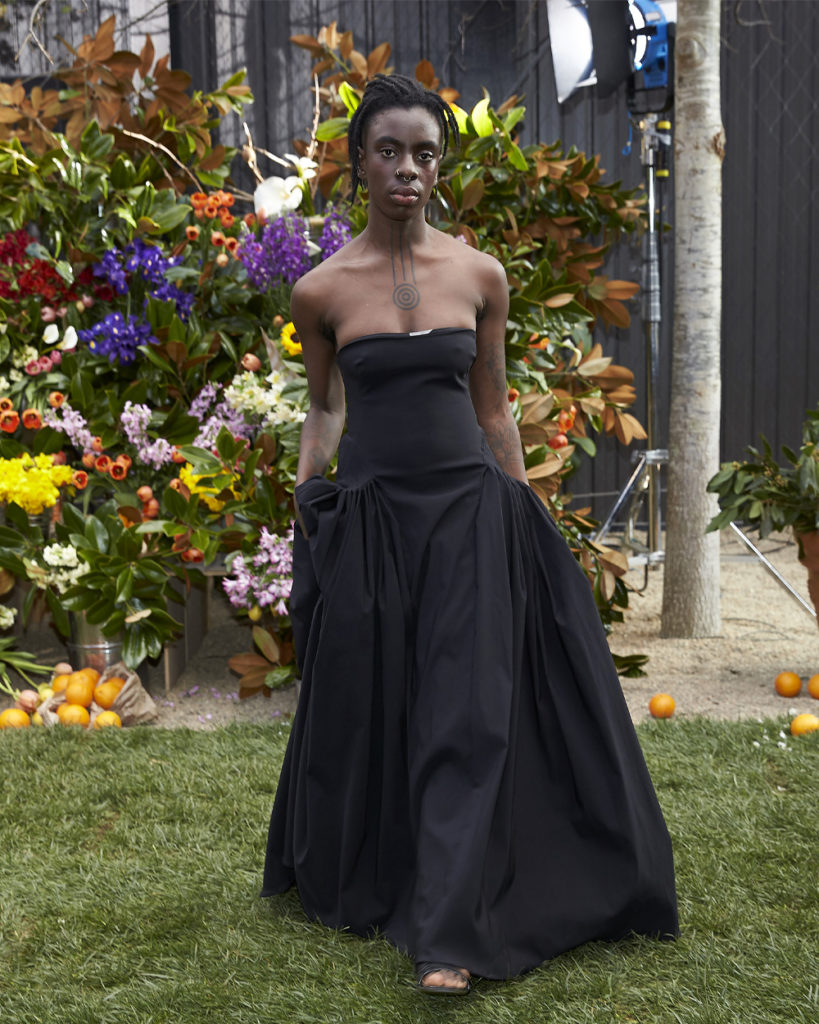
Janina commended the industry for representing a broader spectrum of beauty and identity, but added that this was just the beginning of true change. “There are more brown and black faces, people of a variety of ages, and a small simmering of gender diverse folk seemed to be moving through the runways this year. But to me this is not enough… fashion is for everyone, not just the white cis elites.”
Havilah, created by Wellington-based designer Havilah Arendse, showed at NZFW alongside Natasha Ovely’s socially conscious, gender-neutral clothing brand Starving Artists Fund, and their joint show had one of the most decisively diverse casts of the week.
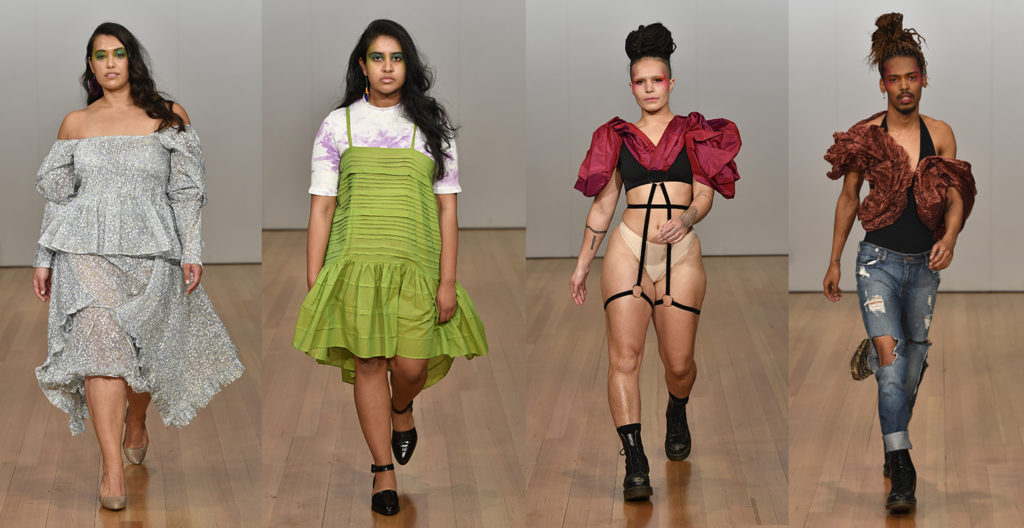
Havilah shared an open casting call on her label’s Instagram account in the lead up to Fashion Week and, talking to FQ after her show, praised the industry for stepping it up. “I think we’re getting there, this year in particular has had the most diverse and inclusive range of shows and campaign imagery I’ve seen in New Zealand and I’m here for it.”
Their group show also presented a refreshingly inclusive range of figures on the runway. The cast included plus-size model Isabella Moore, who also walked in several major shows last week (including Paris Georgia, Juliette Hogan and the Fashion Quarterly/Miss FQ show), and told FQ that her bookings have increased dramatically.
“Last year, I walked for one show for a plus size brand… this year, I walked 11 times for eight different shows with the majority of those being for ‘standard size’ designers who aren’t specifically catering to ‘plus size’.”
Samples have traditionally been cited by designers and bookers as a barrier to including a wider range of body shapes on the runway. A long discussed topic of accountability, the collections shown at NZFW (and loaned to media) consist of sample garments, which are traditionally made in a standardised size, usually an 8 or 10, which are then graded into a full size range when the collection goes into production.
Katherine Lowe, a booker for Clyne model agency, told us that New Zealand samples are generally a size or two larger than those used by designers overseas: “Those are so tiny, it’s crazy.”
Still, local samples are generally still an 8 or maybe 10; according to Radio New Zealand, the average dress size for Kiwi women is 14 (which, confounding for such a common size, is near the upper end of the standard size spectrum, and the beginning of plus or curve sizing).
Most established, straight-size designers don’t include plus-size samples in the collections they show, sell from, and loan for editorial. However Isabella noted that her pre-show fittings and experience of samples was a positive one.
“I felt I was appreciated as a human,” she explained. “If clothes didn’t fit me, I wasn’t automatically cut from the show. Instead, the show producers and organisers would go and source other clothes or the designers would make something to fit me – Paris Georgia and Juliette Hogan tailored garments to fit my body so I could still walk in their shows. I truly felt valued and accepted. The New Zealand fashion industry is really stepping up in my opinion.”
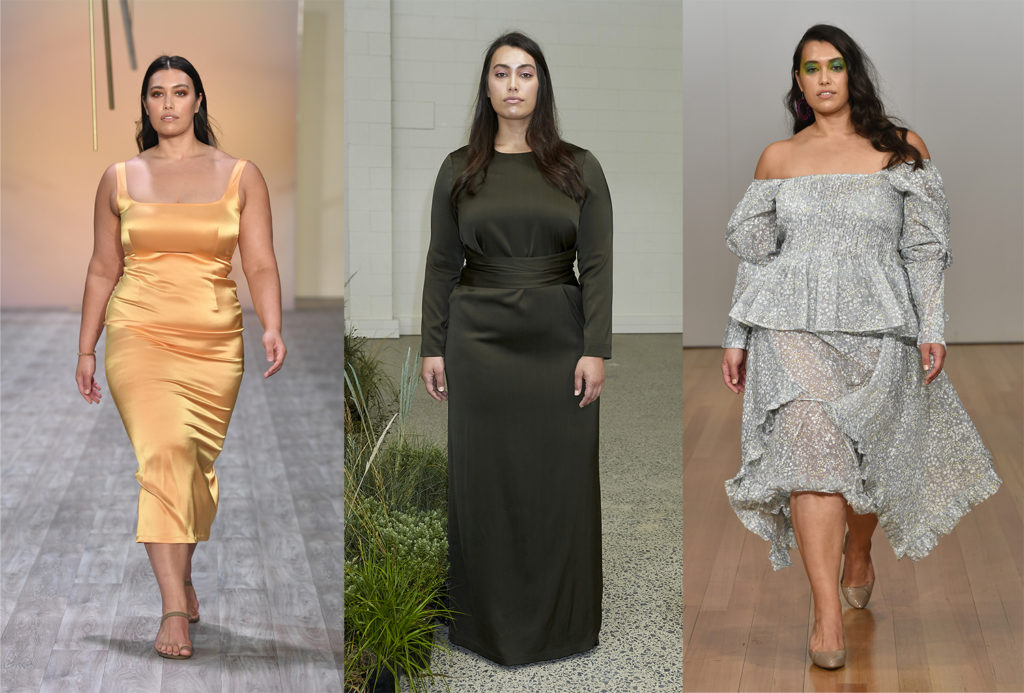
Meagan Kerr, a body positivity advocate and plus size blogger, spoke on the panel at the Diversity Conversation, telling of the importance of visibility. “To see yourself represented on the catwalk or in movies or anything you consume is important to make you feel like a valid person.”
It’s a sentiment that model Isabella discussed with FQ in the wake of fashion week: “Growing up I felt like my body was ‘wrong’. I couldn’t fit the ‘cool’ clothing brands my friends were wearing. I was body-shamed by the lack of diversity in the media into believing that my body wasn’t meant for fashion… I’m sure I’m speaking for a lot of women out there when I say I felt overlooked and unimportant; that fashion was exclusively for women who looked a certain way and fit a certain size.”
She emphasised the important role visibility has in shaping younger people and helping them feel not only ‘seen’ but celebrated by the industry. “Young Kiwi kids are exposed to the media, and as a Kiwi kid who didn’t see anyone who looked like me in the media, I know from personal experience how it can affect your mental health and self-worth as an adult.”
Clothing has traditionally worked within parameters of size, category and, of course, gender – historically divided into womenswear and menswear. That said, many people ignore these binaries and shop from either section, and designers are increasingly embracing unisex and genderless clothing.
Thinking about the important role fashion plays in identity, I asked Janina whether they thought the industry provided enough clothing options for those across the gender spectrum to express themselves fully.
The response was thus: “I think there are a lot more designers of the younger generation that are moving into non-gendered clothing because of the need for it, which is beautiful. I hope and believe that this will be a thing that changes in the future as there are a lot more needs being heard about the lack of options, particularly through social media.”
Although fashion has traditionally been seen as focusing primarily on youth, older models were far more visible this year, with Darya Bing and Mercy Brewer walking several shows each, meanwhile local icons Geeling Ng and Theresa Healey appeared at Hailwood to the delight of the audience.
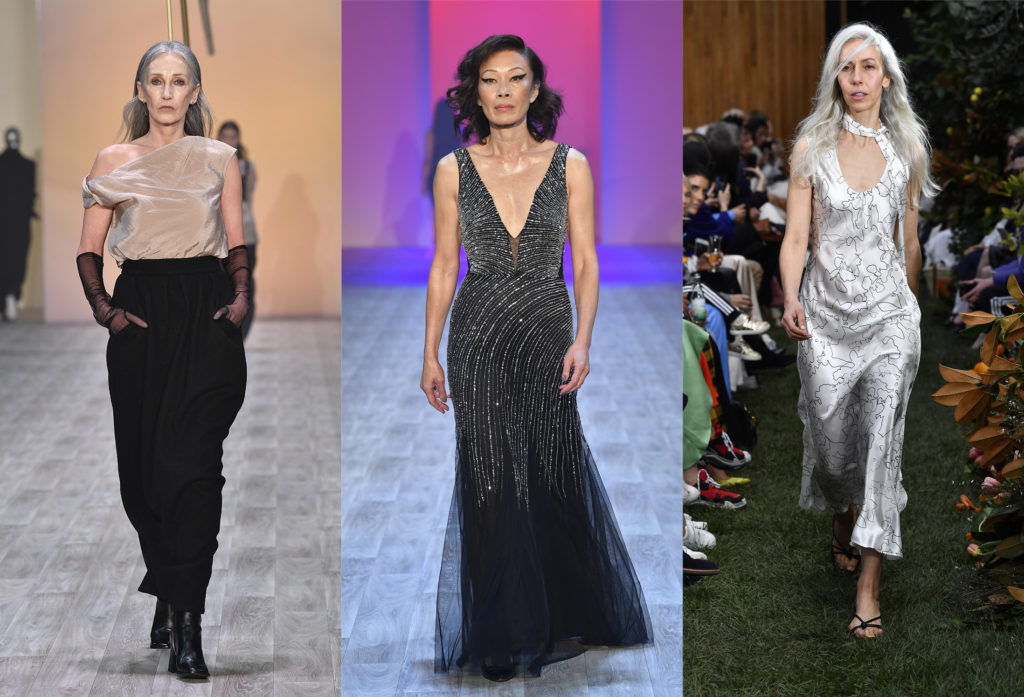
Mercy Brewer was the recipient of worldwide acclaim in 2017 when she starred in a Lonely lingerie campaign, and she featured on the panel of the Diversity Conversation, speaking of the social conditioning around ageing and beauty. “Youth is ingrained as the pinnacle… we’ve all had thousands of years of brainwashing,” she told us.
Gone are the days when models retired in their mid-twenties. Familiar faces in their thirties also appeared in many notable shows, with Ngahuia Williams walking in the Zambesi retrospective, and Penny Pickard and Veronica Crockford-Pound appearing at Kate Sylvester – all three have worked in the industry since they were teenagers.
Another notable inclusion last week was the presence of All is for All (an agency and online store launched earlier this year) who brought models with access needs and disabilities to NZFW for the first time – with Sophia Malthus, Hannah Moore, Imogen Zino, Rebecca Dubber and more, all appearing in shows throughout the week.
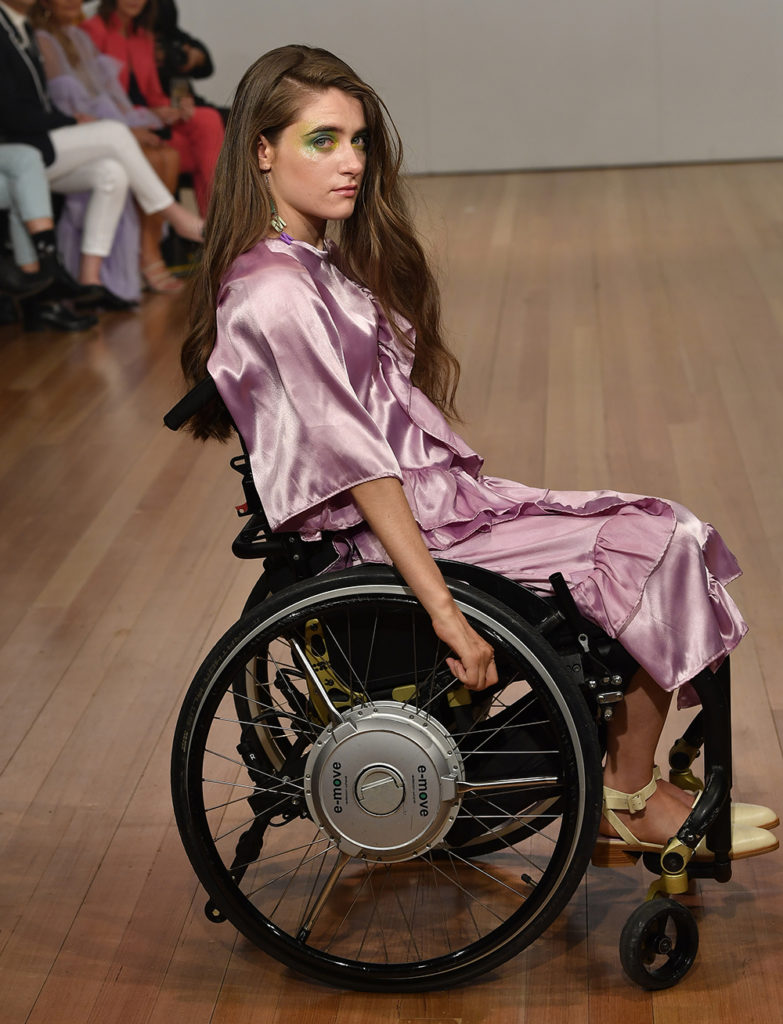
Each year NZFW works with a group of passionate, dedicated volunteers, and for 2019 they partnered with the Ministry of Social Development to place 100 New Zealanders with disabilities in positions. Also on the calendar was the Dance for Abilities ‘Living Colour’ runway show, celebrating and supporting the intellectually disabled community, with 300 people with intellectual disabilities in attendance.
Accessibility advocate and student Grace Stratton, one of the founders of All is for All, delivered a speech at the opening night party (alongside founder of NZFW Dame Pieter Stewart and Mayor Phil Goff) and she was on the panel at the Diversity Conversation.
Acknowledging the work that many designers were doing to make clothing more accessible to people living with disabilities, she said, “All the brands we’ve worked with have opened themselves up to learning about people with access needs and adapting their practices and businesses.”
She also implored the fashion industry to expand their reference points. “We tend to depict disabled people [in media and marketing] as sad or living limited lives. If that’s their reference point then that continues that narrative… our lives are complex, but we’re not sitting here waiting to be fixed.”
Diversity is only a step towards true inclusivity
It’s important to remember that visibility is just the first step in the process of change and improvement across the industry, as stylist Sammy Salsa explained at the Diversity Panel. “There’s a difference between diversity and inclusivity.”
Diversity needs to happen across the whole industry, at every level and Isabella believes that by being truly inclusive, fashion can better represent the community.
“I think they need to look at how they nurture pathways and support diverse designers into the industry,” she said. “If they employ diverse designers, producers, stylists, makeup artists etc. the outcome of what gets designed, modelled and presented on all platforms as ‘fashionable’ will be a truer reflection of our diverse society.”
Havilah encourages businesses to create a place at the table for people who have been historically overlooked. “To me this goes hand in hand with being inclusive. Think of your audience, your clientele – have they had any representation? Or have they been made to feel like tokens and not celebrated? Really think about the inclusion you’d like to see in our industry and do it. Be passionate and give people a chance. For every one person you include, you are creating a place for thousands to see someone like them in the media, in magazines and in shows.”
When discussing diversity and inclusion, especially in the consumer facing elements of fashion such as runway shows and campaigns, tokenism is a word that often comes up – and it’s an issue Mercy raised unapologetically at the panel discussion. “There is tokenism. There is novelty. It’s quite obvious.”
It’s a sentiment that Janina agreed with when I spoke to them after fashion week. “I do believe that some designers are a lot better and it is encouraging to see people I know from the community float through the runway. But there can be times when representation can seem borderlining on tokenism.”
Havilah encourages designers to embrace respect and authenticity. “Tokenism is noticeable when done, it feels forced. Have a genuine interest and passion for the people you work with, it’ll show in your work and in your shows.”
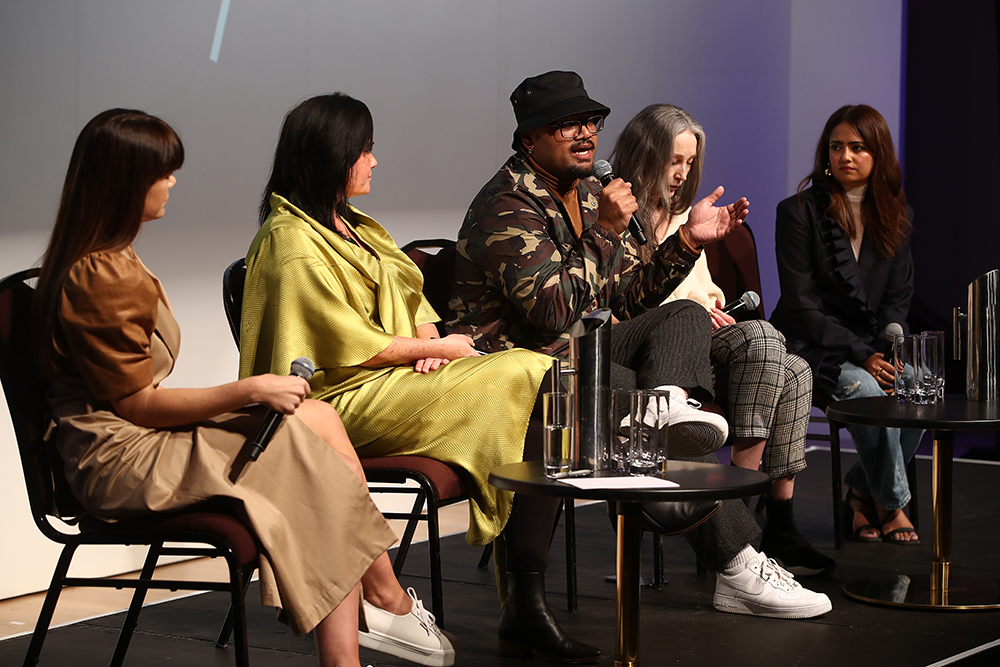
There’s a fine line between celebration and exploitation, and Janina warned that under-represented groups can be taken advantage of. “Having these bodies present only for the intent of capitalising off of them, this is exploitation,” they explained, reiterating the importance of ongoing dialogues. “It is really important to be upfront about tokenism with designers, within the industry and to keep the discussion ongoing.”
Several members of the Diversity Conversation panel shared their experiences of gatekeepers and barriers to success. “We’ve had to work twice as hard because of the colour of our skin,” revealed Sammy, with Zeenat Wilkinson (founder of community-based website Sauce) adding that there were insidious financial incentives to not speak up about racism – with the risk of losing clients or work.
After fashion week, I asked Havilah whether she thought people of colour were given the same opportunities and support. “I’d like to think that we are, however through shared experiences with other designers I feel that this isn’t the case for some.”
She did however reveal her own experiences with subtle racism while navigating the industry, “The amount of times I’ve gone into meetings and have had businesses tell me that ‘I’m not what they expected’, as I sounded different on the phone, has been disheartening but has only made me push harder strive for change while growing my label.”
So, where to next?
Sammy Salsa highlighted the power of discussion, even though discourse can make some people feel uncomfortable – and, he added, so it should. “If we don’t talk about it, nothing’s going to change… we need to make this normal, and we do that by including everyone.”
Dialogue is how we drive change as a community, and our own individual thought patterns need to be addressed too. Isabella stresses the importance of shifting our thinking: “I still have to catch and stop myself thinking, ‘I’m so thankful to be allowed to walk the runway for ‘standard size’ designers/brands’. This mindset is toxic because the media/fashion industry has conditioned me to believe I don’t belong on the runway when really I most definitely deserve to be included.”
Most of the people I spoke to or heard from during the past few weeks agreed that things are getting better incrementally and industry intentions are good, but that there is still a long way to go. Janina is realistic. “I think we have only improved by a small fraction and there is still a lot to take in and think about.”
Isabella feels hopeful about where the industry is heading. “After my positive NZFW experience this year, I am hopeful for the future. But, I believe the change is only just starting.”
Everyone acknowledged the willingness from industry to educate, listen and evolve, and agreed there’s also a general consensus that the status quo can’t be dismantled overnight. “I think if we keep going this way that we will gradually come to a really good place within the industry,” explained Janina. “If we keep this conversation flowing and people within the industry can be open minded and be willing to evolve, then there will be some amazing things to look forward to in the future.”
The non-negotiability of change within the industry also applies to sustainability. As Kate Sylvester expressed during the panel: “The days have gone when you can’t address sustainability. We all have to step up and take this journey, and figure out how to do it… You have to figure it out or walk away. This is an essential part of business now.”
With time to reflect on fashion week and use it as a litmus test of where the fashion industry in Aotearoa is at now, the feeling from designers, media and consumers alike is positive. Dialogue needs to be sustained and fostered from all sides, with all voices sought out, listened to and included.
Fashion is a vital form of self-expression for both the community and the individual, and we have a collective responsibility to ensure it survives and evolves in a way that is not only sustainable but regenerative to society, the environment and the economy.


